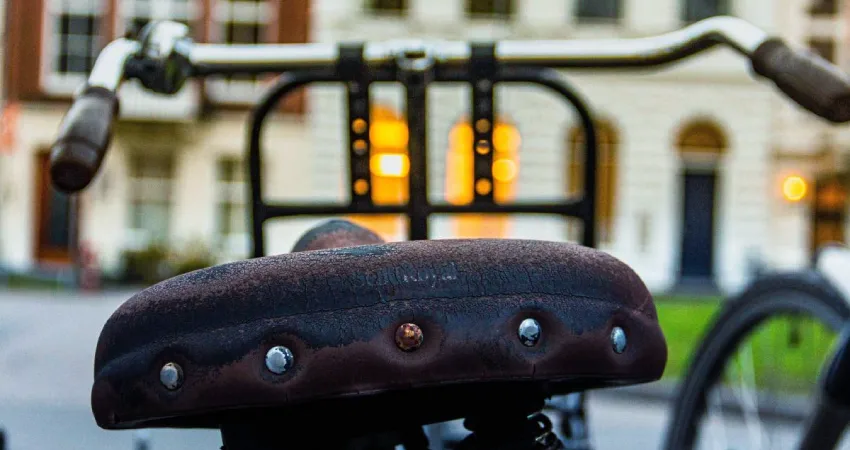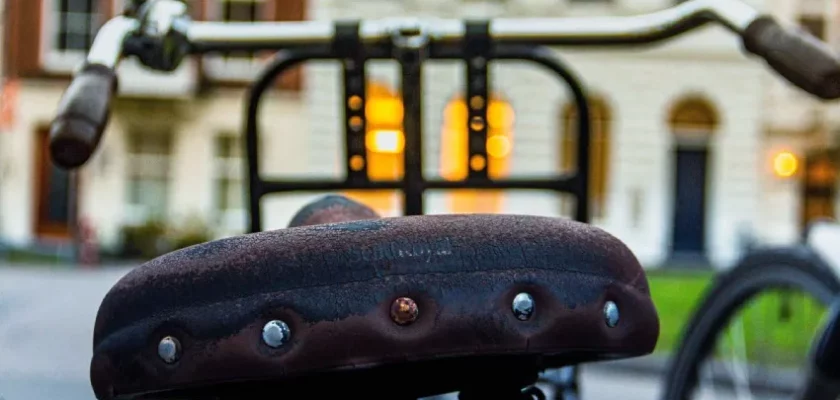The saddle is a crucial component of your cycling experience, providing support, comfort, and stability. It’s only natural to wonder about its durability and lifespan.
Well, the short answer is yes, bike saddles do wear out over time. But the extent and speed at which this happens can vary depending on various factors. From the type of material used to the intensity of your rides, there are several variables to consider when assessing the lifespan of your bike saddle.
So, in this article, we’ll dive deeper into the topic and explore what causes saddle wear and how you can prolong its life. Whether you’re a casual rider or a seasoned cyclist, understanding the signs of wear and knowing when it’s time for a replacement can make all the difference in your biking adventures. So, let’s get started and uncover the secrets of bike saddle longevity.
Do Bike Saddles Wear Out?

Bike saddles, also known as bicycle seats, play a crucial role in providing comfort and support during cycling. However, just like any other part of a bicycle, bike saddles are subject to wear and tear over time.
Factors Affecting Bike Saddle Longevity
Bike saddles are constructed using various materials and designs that influence their durability. Here are some key factors that can affect how quickly a bike saddle wears out:
1. Material
The material used in the construction of a bike saddle greatly affects its longevity. Different materials offer varying degrees of durability and resilience. Here are some common materials used in bike saddles:
– Leather: Leather saddles are known for their durability and comfort. With proper care, they can last for several years.
– Synthetic: Synthetic materials like nylon, vinyl, and carbon fiber are often used to create lightweight and durable saddles. They are generally less susceptible to wear and tear.
2. Riding Conditions
The conditions in which you ride can significantly impact the lifespan of your bike saddle. Factors such as weather, terrain, and distance covered play a role in saddle wear and tear. Here are a few examples:
– Weather: Exposure to rain, extreme temperatures, and UV rays can degrade the materials of a bike saddle over time.
– Terrain: Rough or uneven surfaces, frequent bumps, and vibrations can accelerate wear and tear on a saddle.
– Distance: The more miles you ride, the faster your saddle is likely to wear out. Intensive, long-distance cycling can put additional stress on the saddle.
3. Maintenance and Care
Proper maintenance and care can significantly extend the lifespan of your bike saddle. Here are some tips to help you keep your saddle in good condition:
– Regular cleaning: Clean your saddle regularly, especially after riding in muddy or dirty conditions. Use mild soapy water and a soft cloth to remove dirt and grime.
– Storage: Store your bike in a dry and sheltered area to protect the saddle from unnecessary exposure to moisture or direct sunlight.
– Adjustment: Make sure your saddle is properly adjusted according to your riding position and comfort. Incorrect alignment and tension can lead to premature wear.
Signs of a Worn-Out Bike Saddle
Although it’s normal for a bike saddle to wear out over time, it’s important to recognize the signs of a saddle that needs replacing. Here are some common indicators that your bike saddle may be wearing out:
– Visible damage: Cracks, tears, or visible signs of wear on the saddle’s surface are clear signs that it may need to be replaced.
– Sagging or deformation: If the shape of your saddle has noticeably changed, with dips or visible sagging, it may no longer provide the necessary support and comfort.
– Discomfort and pain: If you consistently experience discomfort or pain during or after rides, it may be a sign that your saddle has worn out its padding or support.
– Loss of structural integrity: A saddle that feels loose, wobbly, or unstable may indicate weakened internal structures due to prolonged use.
When to Replace Your Bike Saddle
Determining when to replace a worn-out bike saddle depends on various factors, including personal preferences and the extent of wear. However, here are a few general guidelines to help you make a decision:
– Visible damage: If your saddle shows visible signs of damage such as cracks or tears, it’s a good indication that it needs to be replaced.
– Discomfort and pain: If you consistently experience discomfort or pain despite making adjustments, it may be time to invest in a new saddle.
– Loss of padding or support: If the padding of your saddle has worn out or lost its resilience, it no longer provides adequate cushioning and support.
– Structural instability: A saddle that feels loose, wobbly, or unstable compromises both comfort and safety, necessitating a replacement.
Frequently Asked Questions
1: How long does a bike saddle typically last?
The lifespan of a bike saddle varies depending on factors such as usage and maintenance, but on average, it can last anywhere from 1,000 to 10,000 miles or 2 to 5 years.
2: What signs indicate that a bike saddle is wearing out?
Signs of a wearing-out bike saddle include visible cracks, tears, or sagging in the padding, uncomfortable rides despite proper positioning, and decreased support or cushioning.
3: Can a worn-out bike saddle affect my riding experience?
Yes, a worn-out bike saddle can negatively impact your riding experience. It may lead to discomfort, pain, or even injury due to inadequate support, improper weight distribution, and increased pressure on sensitive areas.
4: Can a bike saddle be repaired or rejuvenated if it starts to wear out?
In some cases, yes. You may be able to repair minor issues like small tears using adhesive patches. However, once a saddle reaches a certain level of wear, it is generally more cost-effective to replace it.
5: How can I prolong the lifespan of my bike saddle?
To extend the lifespan of your bike saddle, maintain it regularly by keeping it clean, protecting it from harsh weather conditions, and avoiding excessive tension or over tightening when installing it. Periodically check for any signs of wear and address them promptly.
Final Thoughts
In conclusion, it is evident that bike saddles do wear out over time. Continuous use, exposure to weather elements, and regular wear and tear can cause the saddle to become less comfortable and supportive.
As a crucial component of a cyclist’s comfort and performance, it is crucial to monitor the wear of the saddle and replace it when necessary. By doing so, cyclists can avoid discomfort, pain, and potential long-term injuries.
Regular maintenance and proper care can also extend the lifespan of a bike saddle, ensuring a comfortable riding experience for longer durations.
So, remember to keep an eye on the condition of your bike saddle, because a well-maintained and comfortable saddle can significantly enhance your overall cycling experience.

